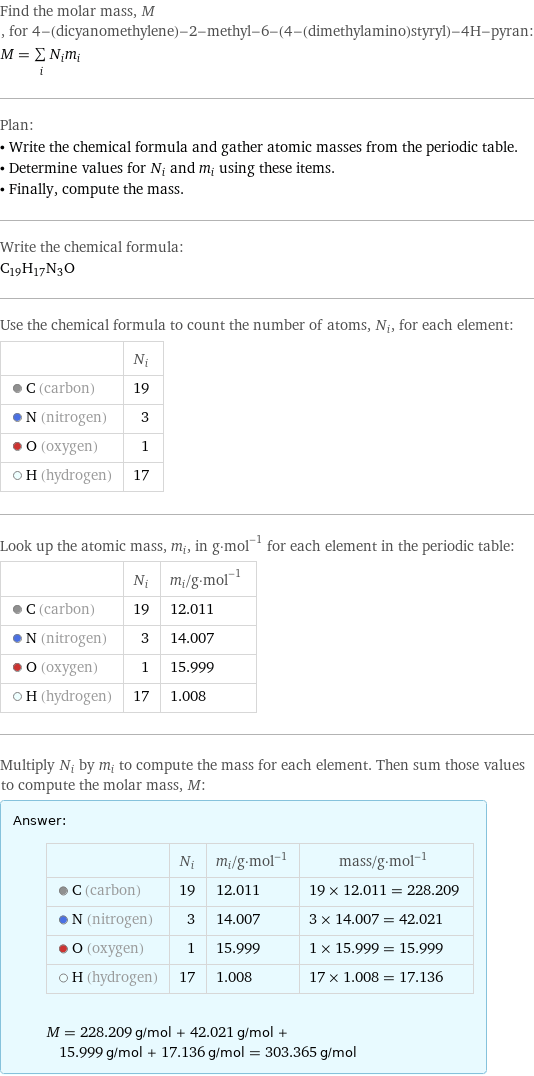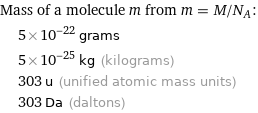Input interpretation

4-(dicyanomethylene)-2-methyl-6-(4-(dimethylamino)styryl)-4H-pyran | molar mass
Result

Find the molar mass, M, for 4-(dicyanomethylene)-2-methyl-6-(4-(dimethylamino)styryl)-4H-pyran: M = sum _iN_im_i Plan: • Write the chemical formula and gather atomic masses from the periodic table. • Determine values for N_i and m_i using these items. • Finally, compute the mass. Write the chemical formula: C_19H_17N_3O Use the chemical formula to count the number of atoms, N_i, for each element: | N_i C (carbon) | 19 N (nitrogen) | 3 O (oxygen) | 1 H (hydrogen) | 17 Look up the atomic mass, m_i, in g·mol^(-1) for each element in the periodic table: | N_i | m_i/g·mol^(-1) C (carbon) | 19 | 12.011 N (nitrogen) | 3 | 14.007 O (oxygen) | 1 | 15.999 H (hydrogen) | 17 | 1.008 Multiply N_i by m_i to compute the mass for each element. Then sum those values to compute the molar mass, M: Answer: | | | N_i | m_i/g·mol^(-1) | mass/g·mol^(-1) C (carbon) | 19 | 12.011 | 19 × 12.011 = 228.209 N (nitrogen) | 3 | 14.007 | 3 × 14.007 = 42.021 O (oxygen) | 1 | 15.999 | 1 × 15.999 = 15.999 H (hydrogen) | 17 | 1.008 | 17 × 1.008 = 17.136 M = 228.209 g/mol + 42.021 g/mol + 15.999 g/mol + 17.136 g/mol = 303.365 g/mol
Unit conversion

0.3034 kg/mol (kilograms per mole)
Comparisons

≈ 0.42 × molar mass of fullerene ( ≈ 721 g/mol )

≈ 1.6 × molar mass of caffeine ( ≈ 194 g/mol )

≈ 5.2 × molar mass of sodium chloride ( ≈ 58 g/mol )
Corresponding quantities

Mass of a molecule m from m = M/N_A: | 5×10^-22 grams | 5×10^-25 kg (kilograms) | 303 u (unified atomic mass units) | 303 Da (daltons)

Relative molecular mass M_r from M_r = M_u/M: | 303